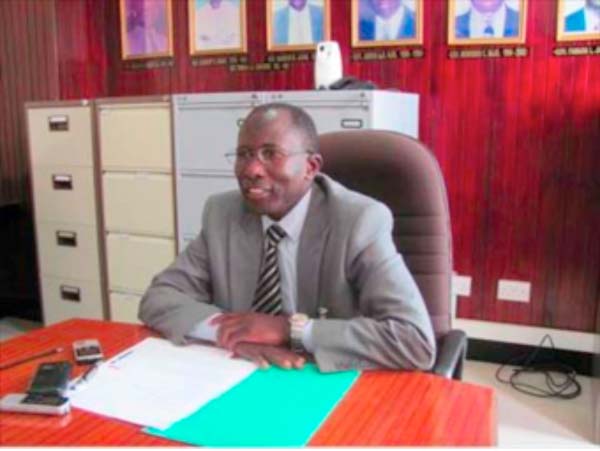
The Domestic Economy: Real GDP Growth
The Gambian economy is forecast to grow by 4.7 percent in 2015 compared to 0.5 percent in 2014 premised on the expected rebound in tourism and agriculture.
Money and Banking Sector Developments
In the year to end-September 2015, money supply grew by 6.2 percent, lower than the 11.6 percent reported in the previous MPC and the 10.9 percent recorded a year ago. The deceleration in the growth of broad money was mainly the result of the contraction in the net foreign assets (NFA) of the banking sector by 63.4 percent following a growth of 13.2 percent in September 2014. The net domestic assets (NDA) of the banking sector, on the other hand, expanded by 28.8 percent compared to 10.1 percent a year earlier.
Of the components of money supply, narrow money, comprising currency outside banks and demand deposits, grew by 7.3 percent compared to 15.1 percent a year ago. Quasi money also grew, but at a slower pace of 5.2 percent and lower than the 6.9 percent in September 2014.
Growth in reserve money decelerated to 11.8 percent from 27.4 percent a year ago reflecting the significant contraction in the NFA of the CBG by 96.2 percent. The NDA of the CBG, on the other hand, rose by 90.0 percent, on top of the 78.7 percent growth in September 2014. CBG’s net claims on government, the main driver of liquidity, rose to D5.0 billion, or 65.6 percent from a year ago.
The fundamentals of the banking industry remain sound. Total assets increased to D28.3 billion in the year to end-September 2015, or 12.8 percent. Gross loans and advances, representing 19.2 percent of total assets, declined to D5.5 billion, or 10.6 percent. The ratio of non-performing loans to gross loans fell to 11.5 percent in September 2015 from 14.9 percent in September 2014.
Capital and reserves stood at D4.2 billion, higher than the D3.2 billion in September 2014. Capital adequacy ratio averaged 36.2 percent and all the banks met the minimum requirement of 10 percent. Deposit liabilities increased to D16.3 billion, or 7.0 percent attributed to the increase in demand deposits. The liquidity ratio stood at 92.3 percent, significantly higher than the statutory minimum requirement of 30.0 percent.
The Return on Assets and Return on Equity rose from 1.8 percent and 11.9 percent respectively in the second quarter to 3.0 percent and 18.6 percent respectively in the third quarter of 2015.
In the year to end-September 2015, the domestic debt rose to D20.7 billion (54.2 percent of GDP), or 23.8 percent from a year earlier. Outstanding Treasury bills, which accounted for 69 percent of the domestic debt, increased by 4.4 percent whilst the stock of outstanding Sukuk Al Salaam (SAS) contracted by 11.2 percent.
The yields on all short dated government securities increased. The yield on the 91-day, 182-day and 364-day Treasury bills rose from 14.21 percent, 16.43 percent and 19.46 percent in September 2014 to 17.54 percent, 17.97 percent and 21.86 percent in September 2015 respectively. Also, the yield on the 91-day, 182-day and 364-day SAS rose to 17.58 percent, 18.15 percent and 21.91 percent compared to 14.30 percent, 16.45 percent and 18.96 percent respectively in September 2014. Additionally, the weighted average inter-bank rate rose to 15.22 percent at end-September 2015 compared to 14.30 percent a year ago.
Government Fiscal Operations
Provisional data on government fiscal operations for the first nine months of 2015 indicates that total revenue and grants amounted to D6.2 billion (16.0 percent of GDP) compared to D6.0 billion (17.0 percent of GDP) in the corresponding period a year ago. Domestic revenue, comprising tax and non-tax revenue, rose to D5.7 billion (14.8 percent of GDP), or 18.9 percent from the corresponding period in 2014. Tax revenue increased to D5.1 billion, or 25.6 percent. Non-tax revenue, on the other hand, contracted to D622.0 million, or 16.8 percent.
Total expenditure and net lending amounted to D8.2 billion (21.2 percent of GDP) compared to D7.5 billion (21.4 percent of GDP) in the first nine months of 2014. Recurrent expenditure increased to D6.4 billion, or 19.3 percent attributed mainly to the 59.3 percent increase in interest payments. In contrast, capital expenditure declined to D1.8 billion, lower than the D2.1 billion in the first nine months of 2014.
The overall budget deficit on cash basis, including grants, is estimated at D1.9 billion (5.1 percent of GDP), slightly higher than the deficit of D1.6 billion (4.4 percent of GDP) in the first nine months of 2014.
External Sector Developments
Provisional balance of payments (BOP) estimates for the first nine months of 2015 indicate that the current account deficit widened to US$75.9 million compared to the deficit of US$47.9 million in the first nine months of 2014. Of the components of the current account, the goods account deficit rose to US$186.10 million compared to the deficit of US$160.90 million in the corresponding period in 2014. Imports rose to US$276.80 million, or 6.5 percent while exports declined to US$76.5 million, or 7.8 percent.
The services account surplus increased slightly to US$40.3 million compared to US$38.30 million in the corresponding period a year ago.The income account also worsened with the deficit widening to US$21.30 million compared to US$18.20 million in the first nine months of 2014 owing primarily to higher external interest payments. Current transfers are estimated at a surplus of US$104.80 million, higher than the surplus of US$89.90 million in the first nine months of 2014. While transfers to general government declined to US$23.0 million, workers’ remittances increased significantly to US$90.30 million from US$64.90 million.
As at end-September 2015, gross international reserves amounted to US$83.93 million, equivalent to about 3 months of import cover compared to US$139.42 million, or 4.5 months of imports at end-September 2014.
Volume of transactions in the domestic foreign exchange market decreased to US$1.1 billion, or 23.7 percent from a year earlier. In the year to end-September 2015, the Dalasi appreciated against the US dollar by 7.35 percent, Euro (22.43 percent) and British Pound (11.46 percent).
Inflation Outlook
Consumer price inflation, measured by the National Consumer Price Index (NCPI), accelerated to 6.6 percent in September 2015, from 6.3 percent in September 2014. The sole driver of consumer price inflation was food prices which increased to 8.05 percent from 7.34 percent in September 2014. In contrast, non-food inflation decelerated slightly to 4.35 percent from 4.84 percent in September 2014. Core inflation, which excludes utilities and energy prices, declined to 6.32 percent from 6.92 percent in September 2014.
The MPC expects that the end-December 2015 inflation target of 5.0 percent would be breached and inflationary expectations to remain elevated. However, the confluence of the sharp deceleration in the growth of monetary aggregates, the expected rebound in agriculture and the tight monetary policy stance should reduce inflationary pressures starting in 2016.
Decision
Against this backdrop, the MPC judges the current stance of monetary policy to be appropriate and decided to maintain the policy rate unchanged at 23.0 percent. The committee would continue to monitor price developments closely and would not hesitate to act appropriately when deemed necessary.
Read Other Articles In Article (Archive)
Man arraigned for alleged theft
Mar 21, 2012, 12:05 PM



